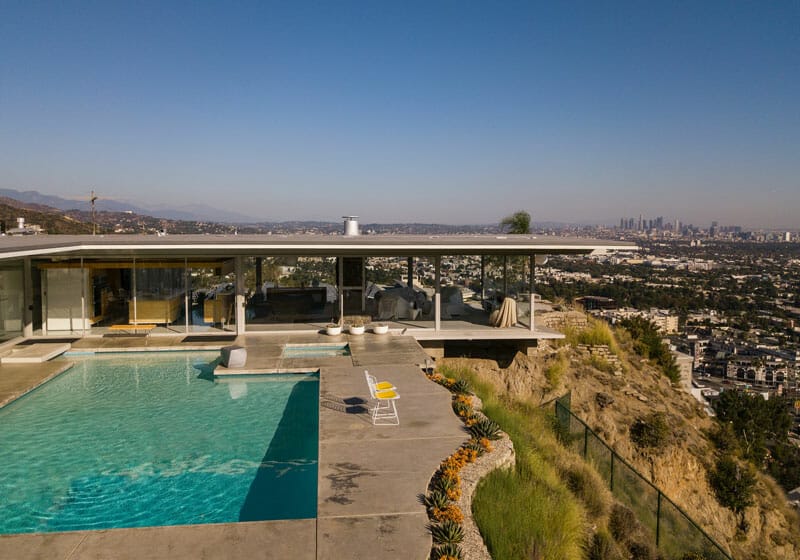Once upon a time, I lived in a yellow brick mid-century home. It was a small house with a pink-tiled bathroom, a simple one-story house, long and low. The original kitchen, which no doubt had Formica and tile tied to the late 40’s era, had long been ripped out, but the original front windows were big and let light shine in all day every day, no matter the season or angle of the sun. I loved that house.
I began hunting for similar-style furniture in flea markets and garage sales. My Craigslist couch was only a few degrees more comfortable than sitting on the floor, but I loved my mid-century house and furniture. And while I’ve always preferred an eclectic house not limited to one time period, you’ll always find a table or lamp that hearkens from the era of Rock Hudson somewhere in my home.
Mid-century design began its takeover of American architecture right after World War II. It spanned from 1945 until 1969, consisting of modern aesthetics and room design that still influences our homes and buildings today. Mid-century design was the evolution of several architectural and design concepts, notably Frank Lloyd Wright’s “Prairie Style” and the German design movement Bauhaus.

Frank Lloyd Wright was known for his large, impressive homes (like Fallingwater, above). But he also contributed to the idea that all homes, big or small, should be efficient, with open floor plans and connected with nature. The simplicity of Lloyd’s Prairie Style was streamlined into some of the midcentury style we see today, minus Prairie’s more ornate woodwork and stained glass.
The German Bauhaus movement was also a big influence on mid-century design. This movement in art and architecture began in 1919 when architect Walter Gropius founded his guild. The Wassily chair was a product of Bauhaus, a simple design that became a staple in office design. Kadinsky taught at the school as well. By the 1930’s Germany became an unstable environment for most people in the arts, and the school was closed. Gropius (and many of his associates) immigrated to America where their ideas would set the standard for many aspects of mid-century architecture and design.

One of our main cultural touchstones in mid-century pop culture is, ironically, a cartoon. When you watch The Jetsons, you can’t help but realize you’re being immersed in a futuristic version of mid-century modern, from the shape of their homes to their flying cars. And there’s a reason for that. The artists and creators of The Jetsons were working for Hanna-Barbera Studios, and the buildings around them (like L.A.’s futuristic Theme Building) likely influenced their creations.

California was the center for mid-century architecture in many ways, thanks to architect Joseph Eichler and his “Eichler Homes.” These suburbs sprung up in the L.A. and San Francisco areas and typified the long, low, one-story homes with walls of glass. But you cannot have any conversation containing the words “mid-century modern” without paying homage to the Eameses and Herman Miller.
Charles and Ray Eames, the powerhouse husband/wife team who became synonymous with all things mid-century, created everything from wood splints for WWII soldiers to their famous “Case Study” Eames house. They collaborated with Herman Miller furniture to create one of the most famous pieces of furniture of all time, the Eames chair. Herman Miller also produced more iconic mid-century modern furniture, such as the Noguchi Table and Marshmallow Sofa, not to mention the cubicle.
At the end of the day, mid-century architecture and design define a large portion of America’s modern history. Whether it’s the cylindrical MIT chapel, JFK’s TWA Flight Center (now hotel), Doris Day’s apartment in Pillow Talk, or your grandmother’s formal living room with giant windows and “don’t touch” plastic-covered couches, this is a style that spans all our collective cultural influences and memories.


